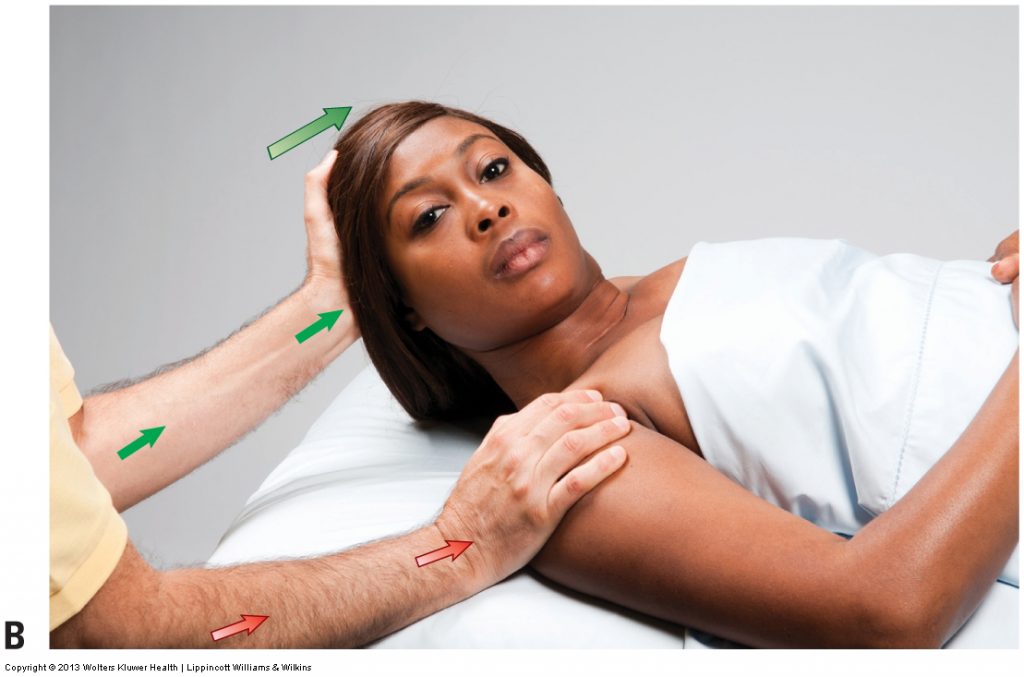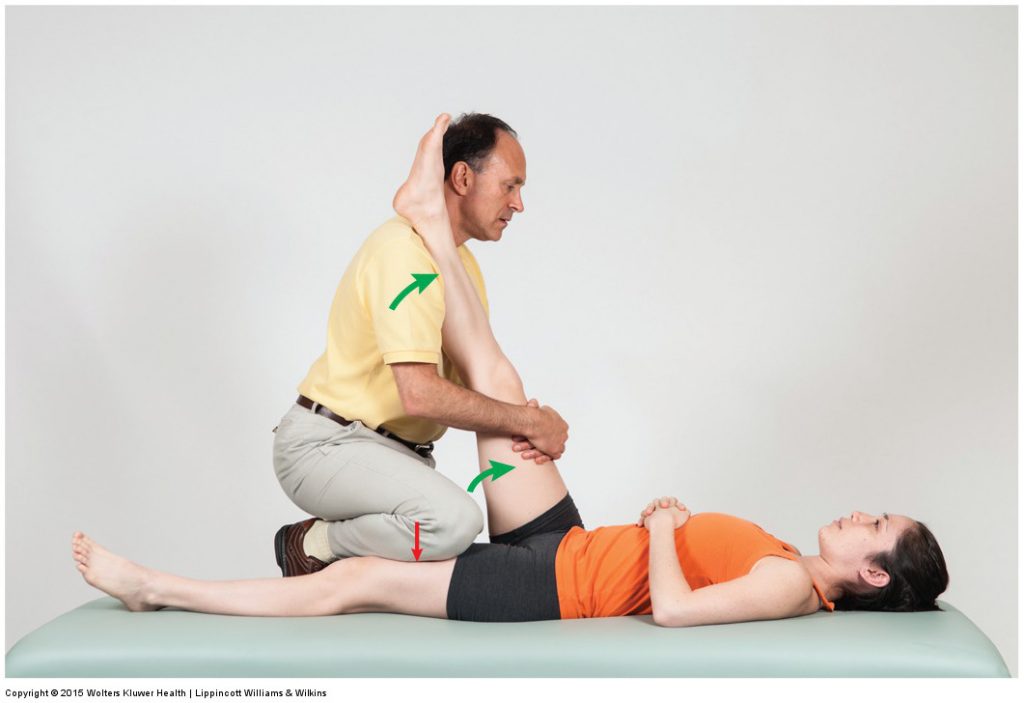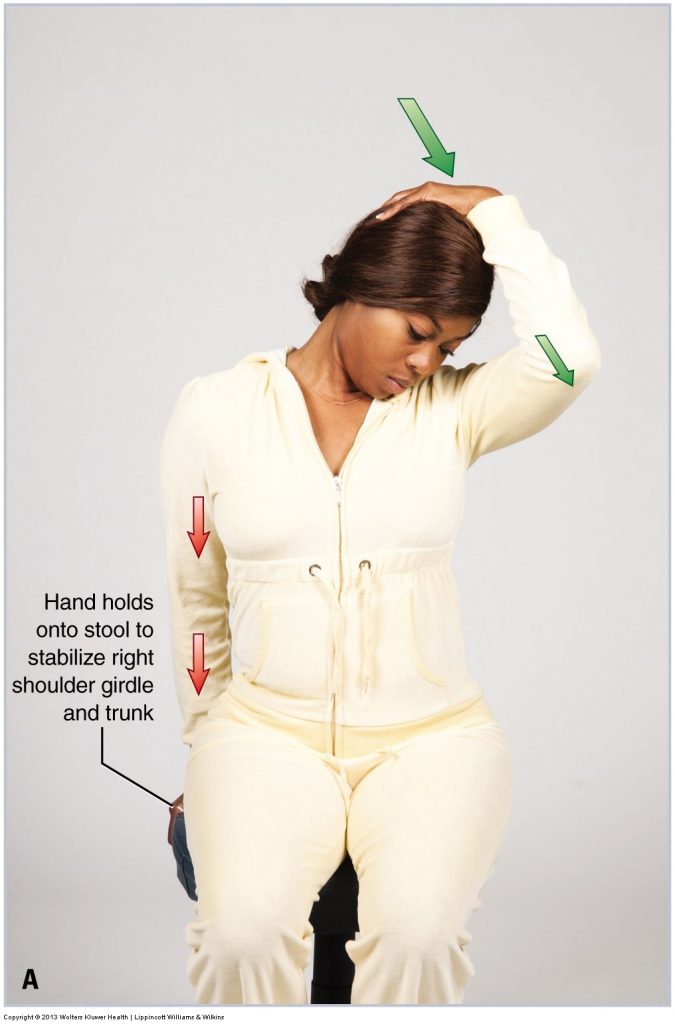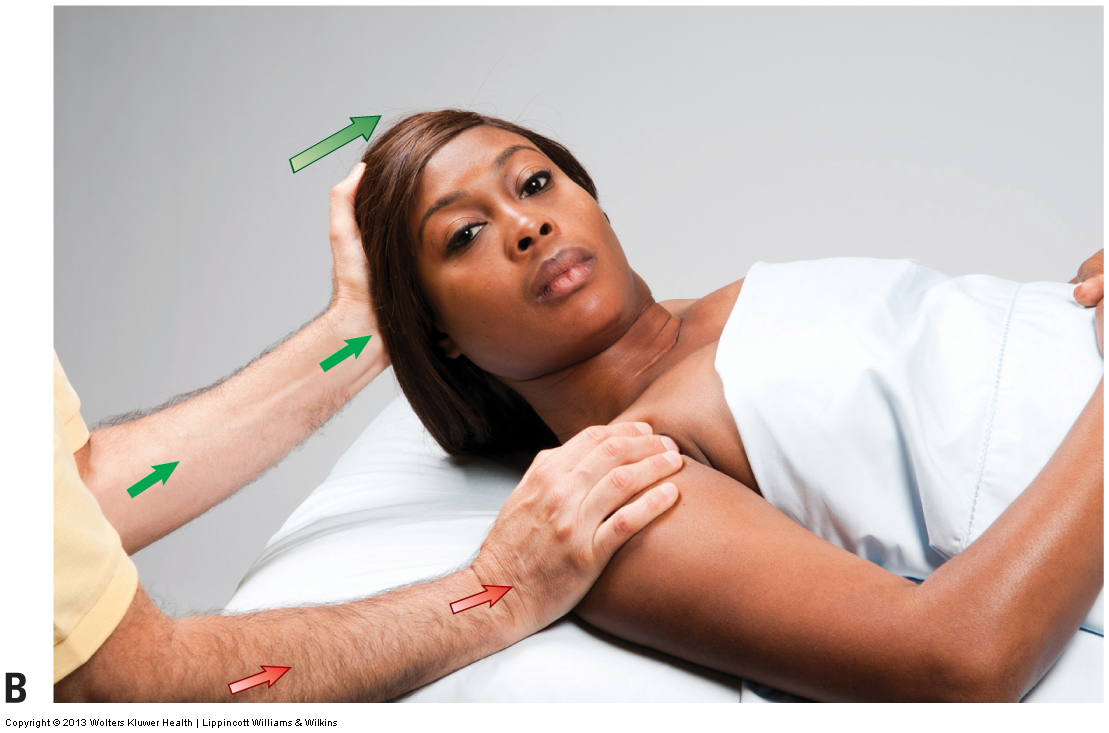Types of Stretching Techniques Explained

Permission Joseph E. Muscolino. Advanced Treatment Techniques for the Manual Therapist – Neck (LWW, 2013).
There are many types of stretching techniques. Following is a guide to the many different types of stretching techniques that exist.
Therapist/Instructor assisted stretching versus client self-care stretching:
- Therapist/Instructor assisted: The therapist/instructor performs the stretch on the client’s body.
- Self-care stretching: The client stretches himself/herself.
Active stretching versus passive stretching:
- Active stretching: The muscles of the joint being moved contract to create the stretch.
- Active stretching is also a strengthening exercise.
- And it facilitates neural pathways.
- Passive stretching: A force other than the muscles of the joint being moved create the stretch.
Static stretching versus dynamic stretching:
- Static stretching: The position of the stretch is held for a prolonged period of time (5 seconds, 10 seconds, 20 seconds, 1 minute, 2 minutes, longer?)
- Static stretching works on fundamental principle of soft tissues called “creep.” A sustained force placed upon a soft tissue will “deform” that tissue to the force. Deforming in this case refers to lengthening it.
- Dynamic stretching: The position of the stretch is held for a short period of time (1-3 seconds, fewer than 5 seconds?)
- Dynamic stretching is more or a warm up, but it is also a stretch. It moves arterial and venous blood, lymphatic fluid and synovial fluid. When dynamic stretching is active, it also strengthens and facilitates neural pathways for movement.
- Hybrid of Dynamic/Static stretching: Combine dynamic stretching with static stretching. Recommended protocol: do approximately 2/3 of the time with dynamic stretching and then finish with one static stretch for the final 1/3 of the time:
- 20 seconds dynamic and 10 seconds static
- 40 seconds dynamic and 20 seconds static

Permission Joseph E. Muscolino. Manual Therapy for the Low Back and Pelvis – A Clinical Orthopedic Approach (LWW, 2015).
Pin and Stretch Technique
- Pin and Stretch technique is a mechanical stretching technique that focuses the line of tension of the stretch to a specific region of the target muscle (one end or the other end of the target muscle).
- The stretch occurs between the pinned point and the attachment that is moved.
Neural Inhibition Stretching Techniques
- These techniques make use of a nervous system reflex…
- Either reciprocal inhibition or Golgi tendon organ reflex.
- Agonist Contract (AC) stretching
- Proprioceptive Neuromuscular Facilitation (PNF) stretching
- Contract Relax (CR) stretching
- Post-Isometric Relaxation (PIR) stretching
Digital COMT
Did you know that Digital COMT (Digital Clinical Orthopedic Manual Therapy), Dr. Joe Muscolino’s continuing education video streaming subscription service for massage therapists (and all manual therapists and movement professionals), has at present (October of 2018) more than 1,000 video lessons on manual therapy continuing education, including entire folders on stretching, joint mobilization, and massage. And we add seven (7) new videos lessons each and every week! And nothing ever goes away. There are also folders on Pathomechanics and Anatomy and Physiology, including an entire folder on Cadaver Anatomy… and many, many more on other manual and movement therapy assessment and treatment techniques? Click here for more information.
How to Perform Stretching
How are the various types of stretching techniques performed?
- Go to the tissue tension mechanical barrier where resistance is felt, and then add a little more stretch to the tissue.
- It is extremely important to feel this tissue tension mechanical barrier.
- If we stretch a muscle too forcefully, we could tear tissue and/or stimulate a muscle spindle stretch reflex that causes the muscle being stretch to tighten/spasm.

Permission Joseph E. Muscolino. Advanced Treatment Techniques for the Manual Therapist – Neck (LWW, 2013).
When to stretch:
- Stretching is better received when the soft tissues are first warmed up. Hot shower, exercise…
- Conventional wisdom: Dynamic stretching before a workout to warm and stretch the person; static stretching after the workout to change the muscle spindle control of baseline muscle tone.
Sets and repetitions (reps) of stretching (typical protocols):
- 30-60 seconds total for each muscle that is stretched.
- Static stretching: 3 reps of 10-20 seconds each (= 30-60 seconds).
- Dynamic stretching: 10-20 reps of 3 seconds each (= 30-60 seconds).
- Hybrid stretching: 20-40 seconds of dynamic stretching reps followed by one 10- to 20-second static stretch hold.
Stretching and Breathing:
- There is only one somewhat sacrosanct guideline regarding stretching and breathing. We want the client to be relaxed when we stretch them, and people are more relaxed when they are breathing out, so have the client breathe out when the stretch is performed.
Two forces needed when stretching
- When stretching the client, two forces are needed: stretching force and stabilization force:
- Stretching force: The force that moves one of the attachments of the target muscle to create the stretch.
- Stabilization force: The force that stabilizes the other attachment of the target muscle.
Our Body Mechanics – General Principles:
- We should always work from our core.
- Our upper extremity joints should be stacked.
- Our feet should be in line with our core so that our entire body is lined up along the force of the stretch.
- Use gravity and body weight when possible.
(Click here for the blog post article: What is Stretching?)
Digital COMT
Did you know that Digital COMT (Digital Clinical Orthopedic Manual Therapy), Dr. Joe Muscolino’s continuing education video streaming subscription service for massage therapists (and all manual therapists and movement professionals), has at present (October of 2018) more than 1,000 video lessons on manual therapy continuing education, including entire folders on stretching, joint mobilization, and massage. And we add seven (7) new videos lessons each and every week! And nothing ever goes away. There are also folders on Pathomechanics and Anatomy and Physiology, including an entire folder on Cadaver Anatomy… and many, many more on other manual and movement therapy assessment and treatment techniques? Click here for more information.


